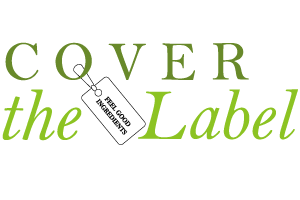How to Eat More Sustainable Right Now?
April marks the beginning of Earth Month and Earth Day is April 22nd, which is a celebration of environmental awareness and respect for our planet. One of the main goals of Earth Month is to spread awareness on how to slowly add swaps or changes to be more eco-friendly. These can be tiny but mighty swaps and I'm sharing my top tips on the blog today to leave you feeling your best.
Did you know that Earth Day began in 1970? When Senator Gaylord Nelson brought environmental concerns to attention after years of ignoring how we affect the planet. Now it is truly exciting that Earth Day has been celebrated on April 22 for the past 51 years!In 1990, this holiday is now celebrated by more than 193 countries. No need to stress as there are no requirements for celebrating Earth Day or Earth Day, except for a commitment to do right by the earth, whether big or small. In this blog, you’ll learn simple ways to start eating more sustainably; however, it just takes one small lifestyle change to impact the planet! Check back during Earth Week (April 19th) for ways to add more sustainable lifestyle tips into your routine.
How to Add Sustainability into your Food Routine?
Sustainable eating is defined as consuming food that’s healthy for your body and the environment. Most sustainable foods don’t have labels and don’t come in a box. They are foods that minimize harm to the environment during all stages of production. Locally grown fruits and veggies, as well as protein from animals that are raised in a humane way, are considered sustainable foods, plus have further distance to travel to get into your homes.
Eat Locally: Purchase your produce and meats from local farmers when possible or ask your butcher questions. Most cities, especially in Southern California, have farmers markets every day. This will reduce carbon emissions and road congestion, boost the local economy and support local farmers. And best of all, locally grown veggies and fruits, are basically harvested within hours of landing on your table! The flavors can’t be beat either. Not near a farmers market? Then check around for CSA boxes.
Eat Seasonally: This goes hand-in-hand with eating locally. Buy locally grown fruits and veggies when they’re in season. For example, eat root vegetables and hearty greens in the fall and winter, while salads, fruits and tomatoes are at peak freshness in the summer. Most grocery stores even showcase when products are local, so keep an eye out for those signs.
Eat More Plants and Choose Regenerative Grass-Fed Meat: Just cutting out meat for one of your meals a day and eating more fruits, veggies and whole grains, will have a positive impact on both the environment and your health. However, that doesn’t mean no more meat! When choosing meats remember to support farmers that allows their creatures to live how they were meant to be! Pasture-raised, foraging off the land, with no hormones, steroids or antibiotics used. It’s not only better for the animals and ourselves but will regenerate the environment, especially the soil. Check out our favorite family rancher, Buy Ranch Direct, and use code WELLNESS for 10% your first order!! It is tasty, delicious and helps mother Earth.
Learn to Cook: Without basic cooking knowledge, sustainable eating might be a challenge. A little cooking experience will take you a long way towards your goals of eating fresh, quality foods. Luckily, any recipe can be made sustainable and no fancy cookbooks are required! Subscribe to my newsletter to get my Handy Cooking Guide, which comes with ideas to flavor any dish.
Grow Your Own: The connection you have with the food you grow is special. Whether it’s a backyard garden or herbs in a pot on your kitchen window. Homegrown is as fresh and local as you can ever get! And again, you can’t beat the taste or the convenience. If you don’t have space for a garden try visiting a local community garden to get inspiration instead. We had a community garden plot for 2 years and it was so much fun learning from other gardeners. Plus, you get to share your bounty with everyone. However, growing herbs just needs some sunlight and natural light, so if you live in a tight space you can still get freshly grown herbs too.
Think About Packaging “Low Impact”: Switch to green products that prevent waste and reuse. Learn how to make your own yogurt (Instant Pot Ready), get a compost bin and reuse glass creatively (as it’s one of the healthiest ways to store your food). Think about all those bulk items, chia seeds, hemps seeds and cacao nibs that can be placed in glass mason jars instead of plastic containers. At home, we reuse raw almond butter jars to carry smoothies, overnight oats and yogurt parfaits. The possibilities are endless!
How will you be incorporating sustainable eating this year? You can choose one above or share yours below. I can’t wait to hear! It is all about starting small and doing what is right for you. We are all on unique paths to help mother Earth thrive and keep ourselves living our best life.

